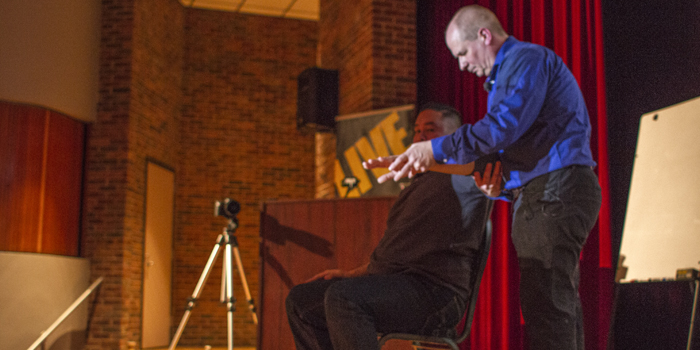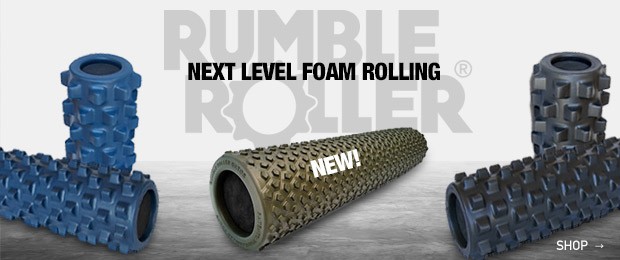
To begin his presentation at the 2017 elitefts Sports Performance Summit, Dr. Ken Kinakin discussed the four most common muscular injury patterns associated with the bench press, as well as how you can test for these dysfunctions. These were the main points of part one of the presentation. Now in part two, Dr. Kinakin moves toward the topic of treatment and rehabilitation.
Continuing to discuss pain when pushing forward and the all-to-common subscapularis strain, Dr. Kinakin first takes a step back from the specific musculature of the shoulder area and instead begins by discussing something he refers to as the "redline" in training. This is the point at which exercise intensity has increased to full capacity and you pass into the zones of injury severity. The key to successfully making progress is knowing how to push your exercise intensity without crossing into the redline.
WATCH: Dr. Ken Kinakin SPS Presentation — Subscapularis Strain and Testing
He then explains how soft tissue therapy should and shouldn't work. Demonstrating on an attendee again, he shows how proper soft tissue work is about building and releasing tension, and not about pain in the muscles. He then, using an attendee with shoulder pain as a model, shows an activation exercise to help release tight shoulders and pecs, which can be used prior to training to as part of a warm-up.
Dr. Kinakin continues by going into detail about human kinetics and the muscle tests he has designed to determine if an athlete has the proper movement capabilities to perform a bench press. To explain the process of treating individuals lacking proper movement, Dr. Kinakin discusses neurosensory effects and mechanoreceptors — two of the bodily factors that rule your movement. He explains the concept of dehydrated fascia and how it becomes resistant to movement when it doesn't receive proper hydration. Rehydrating this fascia takes a significant period of time and isn't as simple as drinking three glasses of water.
As the final point of this part of his presentation, Dr. Kinakin shows a number of tests, stretching, and rehabilitation techniques that you can use yourself, including bent arm pectoral and posterior deltoid isometric agonist-antagonist exercises, bench press flexibility exercises, resistive tubing exercises, isometrics, and needleless acupuncture with devices such as the MPS Dolphin, which targets scar tissue.
In the next section of his presentation, Dr. Kinakin will move to the topic of pain when pressing overhead.
By the minute:
- (0:36) Training zones and the training edge
- (2:47) Soft tissue therapy
- (5:02) Self-test for barbell bench press injuries
- (6:16) Releasing shoulder pain activation drill
- (9:56) Empowering athletes as much as possible
- (12:22) Neurosensory effects and mechanoreceptors
- (14:12) Bent arm pectoral and posterior deltoid isometric agonist-antagonist exercise and stretch
- (16:50) Needleless acupuncture and treating scar tissue









